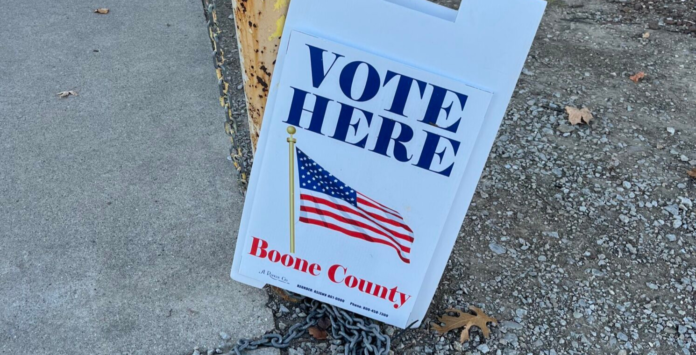
By Leslie Bonilla Muniz
Indiana Capital Chronicle
INDIANAPOLIS — Electorate engagement wasn’t as high as hoped, with just 41% of Indiana’s registered voters going to the polls for last month’s midterm elections — a nearly 20% drop in turnout from the 2018 midterms.
Indiana Election Division data shows Hoosier voters performed the worst in Decatur, Tippecanoe and Marion counties, with turnout rates of 24%, 32% and 34%, respectively. They did best in Crawford, Spencer and Union counties, at 51% turnout for all three.
It’s the latest data point in a long-running trend of low turnout when compared to the rest of the country.
“There are some states, historically, that have high turnout and some that have low turnout. And Indiana is one that turnout has been historically on the lower side … and 2022 was a bit lower than usual,” said Chad Kinsella, an associate professor of political science at Ball State University. He also directs the Bowen Center for Public Affairs.
But midterm turnout has been lower before. While 51% of registered voters cast a ballot in 2018, just 30% did so in 2014, according to the Election Division.
Who voted where?
Kinsella said that age, income and education are the biggest factors in explaining turnout — with older, wealthier and more educated people being more likely to vote.
“Older people live out in those rural counties and they tend to vote more often,” he said. “… A lot of those people with money are going to live outside of the city limits.”
That can also influence geographic trends.
Indiana’s most rural counties generally fared better than their urban counterparts in Election Division voter statistics, when matched against one Purdue University study.
And that’s born out in Kinsella’ own research: In precinct-level Delaware County data, he said, turnout was lower near Muncie and higher in suburban and rural areas.
Hoosier voting culture
Less measurable is Indiana’s civic culture.
But a sense of duty to vote appears stronger among rural Americans, said Michael Wolf, a political science professor and department chair at Purdue University Fort Wayne. He cited the University of Notre Dame’s research.
“There’s this very communal sense and very socialized duty to vote that ends up coming through, whereas a lot of times in suburban and urban areas, a lot of voter turnout is often driven by competition,” Wolf said.
Duty is constant, but motivation can change every election.
Wolf said he’s seen the theory play out in his own university, which hosts a mix of students from urban, suburban and rural backgrounds. One student in 2020 coordinated a weekend trip home with hometown friends to vote early together.
“To think that they were coming from all different colleges around to come up and vote at the same time, kind of indicates, in his own words, just that that was what the community expected,” Wolf said. “So that’s what they did.”
The Indiana Capital Chronicle is an independent, nonprofit news organization dedicated to giving Hoosiers a comprehensive look inside state government, policy and elections. The site combines daily coverage with in-depth scrutiny, political awareness and insightful commentary.
To see the original version, click here.




